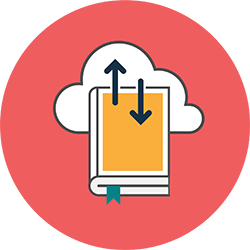 Information, data and media literacy is all about the skills, knowledge and understanding of how to search for, evaluate and use information. This looks at information in general but also how this is represented in media (text, images, video, and audio) and in data form (numbers, charts, graphs, statistics).
Information, data and media literacy is all about the skills, knowledge and understanding of how to search for, evaluate and use information. This looks at information in general but also how this is represented in media (text, images, video, and audio) and in data form (numbers, charts, graphs, statistics).
Some examples of the types of digital capabilities you might consider here are:
- Searching for information using search engines like Google
- Being able to judge whether the information you have found is reliable and can be trusted
- Understand copyright of information, images, audio and video you find
- Know how to reference other people’s work to avoid plagiarism
- Organise this information so you can easily find it again, perhaps using bookmarks or another service to save your links
- Ensure your personal data is secure
- Review the privacy settings on services you use like social media
- Access and interpret data in spreadsheets, website or presentations
- Understand the messages presented in a variety of media
- Consider how these have been designed for different audiences
Some people may even be able to:
- Understand alternative to copyright like creative commons licensing
- Bring together information you find using pinboards or social bookmarking
- Consider the ethical and legal requirements around storing and accessing people’s data
- Analyse data by running reports and other queries
- Use tools to create and edit video, audio and images